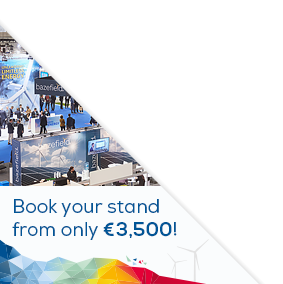Posters
Siblings:
ProceedingsProgrammeProceedingsSpeakersPostersContent PartnersElectrification StageMarkets TheatreR&I ActivitiesStudent DayProgramme Committee & abstracts reviewersPresenters dashboardCome meet the poster presenters to ask them questions and discuss their work
We would like to invite you to come and see the posters at our upcoming conference. The posters will showcase a diverse range of research topics and provide an opportunity for delegates to engage with the authors and learn more about their work. Whether you are a seasoned researcher or simply curious about the latest developments in your field, we believe that the posters will offer something of interest to everyone. So please, join us at the conference and take advantage of this opportunity to learn and engage with your peers in the academic community. We look forward to seeing you there!

PO121: Energy storage requirements for an islanded offshore wind turbine and electrolyser system
Mathieu Kervyn, Research Engineer, Offshore Renewable Energy (ORE) Catapult
Abstract
Individually, wind turbines and electrolysers are relatively mature technologies. However, their integration into an islanded offshore system is a new concept, with only a handful of demonstrator projects in existence. This paper aims to highlight one important aspects of this system: the need for an interfacing energy storage. In this paper, the energy buffer is considered for two different scenarios: the first focuses on the power rate mismatch, and the second focuses on higher rated wind turbine scenarios. 12 hour time series datasets are used for these simulations. The first study, power rate mismatch, is caused by the fact that electrolysers respond to reference changes slower than wind turbines respond to gusts. Therefore, an energy buffer is required to maintain a steady DC link voltage, ensuring safe operation of interfacing systems, the electrolyser and wind turbine. The energy buffer requirements for relatively fast acting electrolysers and relatively slow acting electrolysers are compared. While the fast acting electrolyser requires less energy than the slow acting electrolyser, the absolute storage requirements are nonetheless small for both. The second study is driven by the outcome of techno-economic studies, which suggest having a wind turbine rated at 20% more than the electrolyser. The impact of not curtailing the wind turbine power is studied for different measured wind turbine power profiles. The outcome of this study is that huge energy storage requirements, in the 100s of kWh range, are required for maximising the energy capture. As this is unrealistically large, careful consideration of the supervisory control strategy is required to manage the integration of wind turbines and electrolysers to smaller, and more realistic, energy storage capacity.







